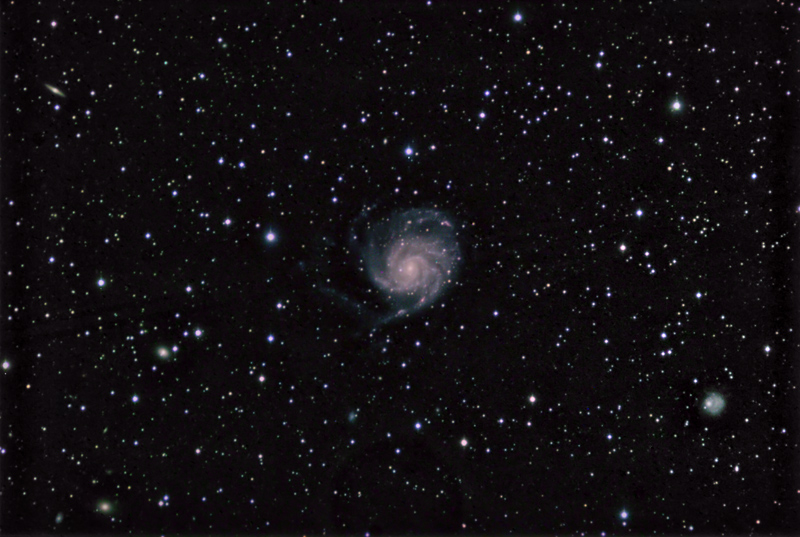|
Description:
|
M101 is a relatively large galaxy compared to the Milky Way. With a diameter of 170,000 light-years it is nearly twice the size of the Milky Way. Less is known about the mass of M101. A frequently cited number is an equivalent mass of about 16 billion solar masses. That value is almost certainly too low, and probably stems from M101's low surface brightness. New insights in its HII regions and rotational velocities have put the number between 100 and 1000 billion suns.[5]
Another remarkable property of this galaxy are its huge and extremely bright HII regions, of which a total of about 3000 can be seen on photographs. HII regions are places in galaxies that contain enormous clouds of high density hydrogen gas contracting under its own gravitational force. Eventually, when the localized hydrogen contracts enough for fusion processes to begin, stars are born. Consequently, HII regions are places that often contain large numbers of extremely bright and hot young stars giving them their characteristic blue color.
On photographs M101 can be seen to be asymmetrical on one side. It is thought that in the recent past (speaking in galactic terms) M101 underwent a near collision with another galaxy and the associated gravitational tidal forces caused the asymmetry. In addition, this encounter also amplifies the density waves in the spiral arms of M101. The amplification of these waves also leads to the compression of the interstellar hydrogen gas, which then triggers strong star formation activity.
|

